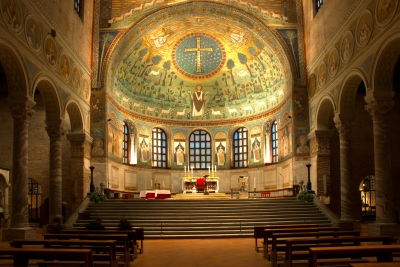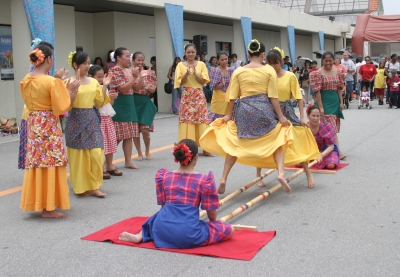AN AMALGAM OF THE EAST AND THE WEST

Chettinad art and architecture is distinct for its unique mix of European and Indian styles.
Tiled carpets
One can find many gems of Indian art and culture in Tamil Nadu's renowned Chettinad region. Known for its distinct style of architecture, Chettinad's temples and stately mansions testify to the prosperity and artistic traditions of the local Chettiar community.
The village of Athangudi, here specialises in the manufacture of handcrafted tiles. The Chettiars, who travelled overseas, for trade, in the 19th century, were inspired by European ideas of interior decoration and infused them in their homes. The Athangudi tiles are an expression of this unique blend of the east and the west.
Elaborate
Making these tiles is a time-consuming process. Each tile is made individually on a square sheet of glass. A metal stencil, with the desired motif, is placed on the glass. A slurry of cement and coloured oxides is poured into the spaces of the stencil and spread evenly. The workman, then removes the stencil and sprinkles a layer of dry sand on it after which he lays a thick layer of a wet mixture of cement, sand and small stone aggregates or jelly. The tile is dried in the sun before immersing it in water for several days. When the tile dries out, the glass sheet slips away. leaving behind a smooth, glistening tile with a colourful ornate design.
Athangudi tiles are usually in geometric or floral designs in earthy colours such as red. blue, green and ochre. When laid out, they look like an exotic tiled carpet.
Mosaics of Ravenna
The port city of Ravenna was the seat of ancient Italy's Byzantine Empire. An immortal legacy of that era is the city's collection of exquisite mosaics of early Christian art, said to be the best examples of Byzantine art outside of Istanbul. UNESCO has granted World Heritage status to eight early Christian monuments of Ravenna, each of which boasts of outstanding mosaics dating back to the fifth and sixth centuries. The mosaics in the Basilica of San Vitale, depict figures from the Old and New Testaments along with the reigning monarchs, archbishops and bishops of the time. Interiors with richly decorated motifs of angels, flora, and fauna, a great triumphal arch embellished with mosaic medallions depicting Jesus Christ and the 12 Apostles, are but some magnificent fixtures found here.
In the Basilica of Sant Apollinare Nuovo, Jesus is portrayed as a Byzantine emperor. The ornate panels describe his miracles and parables, as well as the Passion and Resurrection.
The Mausoleum of Galla Placidia has the best preserved mosaics in the area. The most famous of them is called Christ as the Good Shepherd. It shows the haloed figure of Christ draped in gold and purple tending to his flock.
Picture Credit : Google
